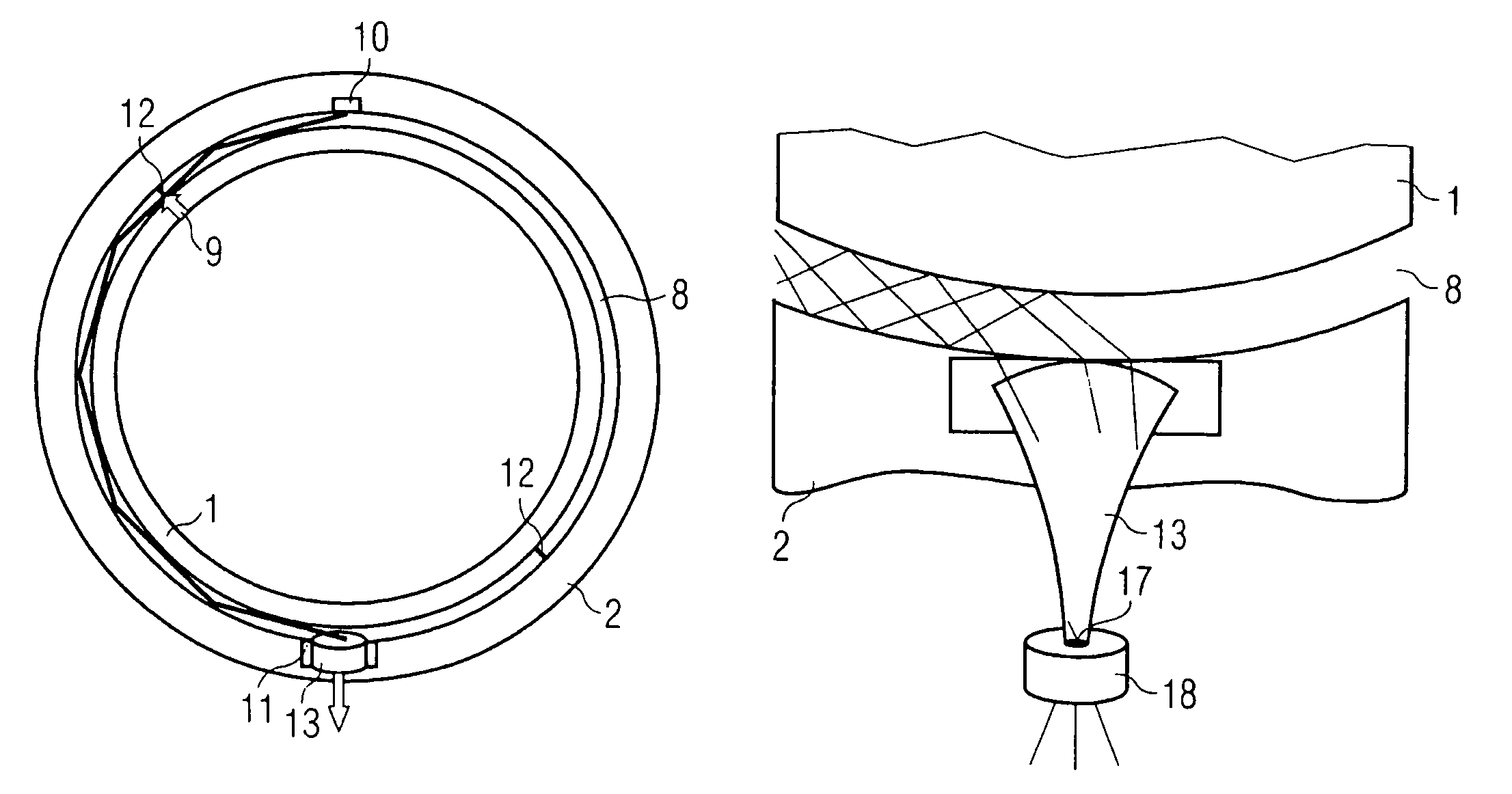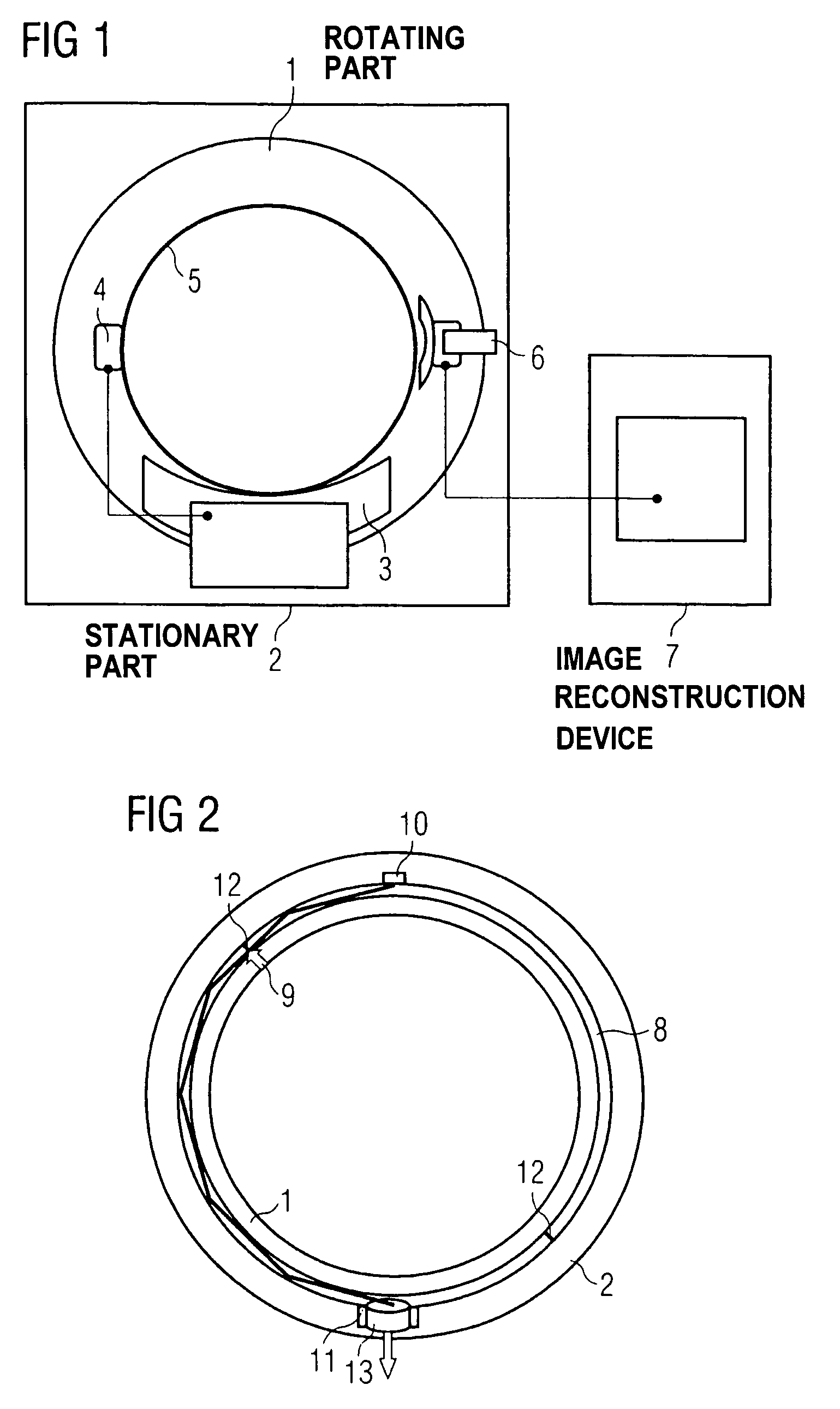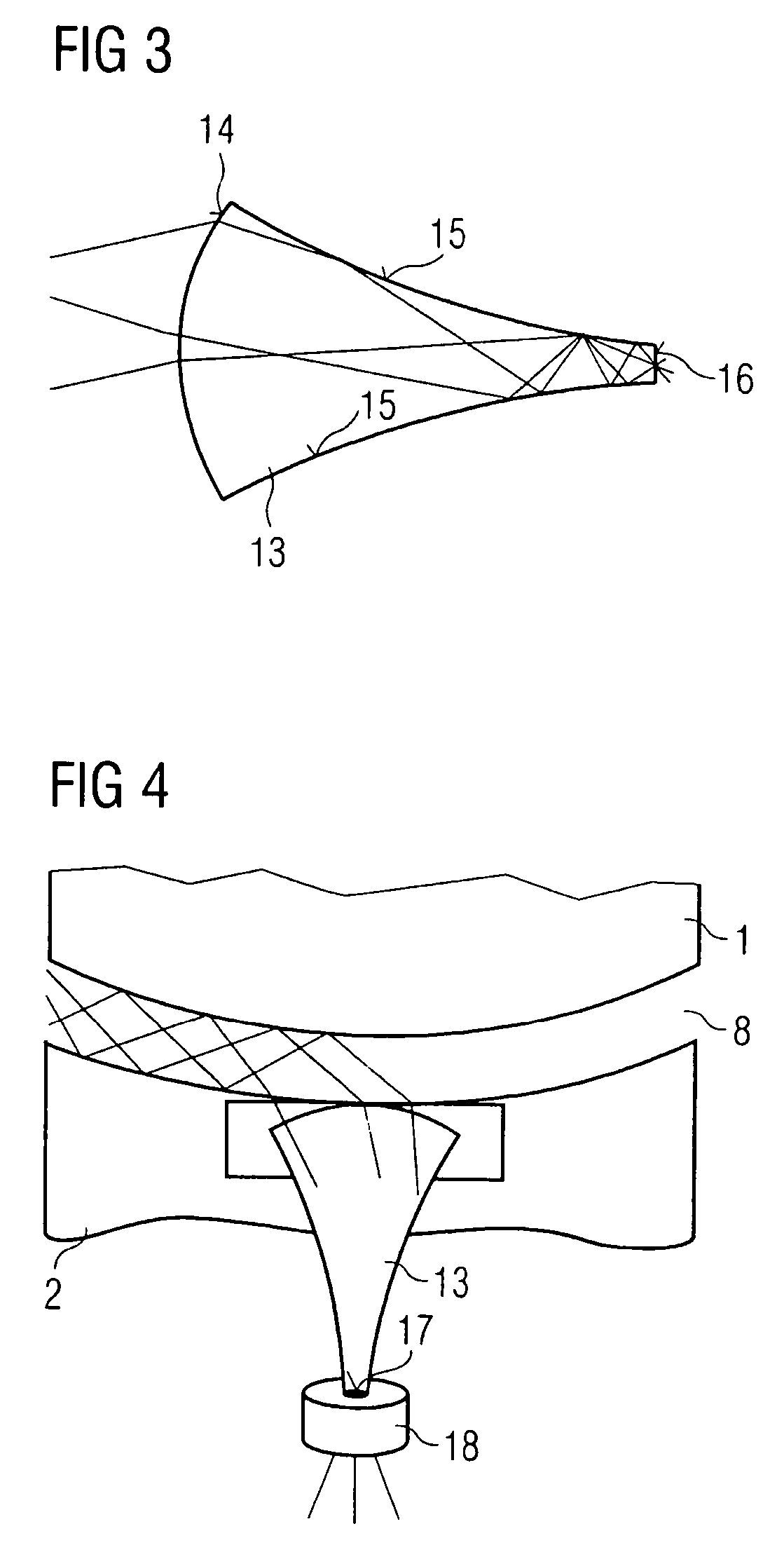Apparatus to transfer optical signals between a rotating part and a stationary part of a machine
a technology of optical signals and rotating parts, applied in the field of computer tomographs, can solve the problems of increasing the cost of mechanical precision maintenance and adjustment of individual components of the system, increasing the difficulty of dealing with electromagnetic compatibility problems, and data transmission with such a high transmission rate. achieve the effect of higher signal-to-noise ratio
- Summary
- Abstract
- Description
- Claims
- Application Information
AI Technical Summary
Benefits of technology
Problems solved by technology
Method used
Image
Examples
Embodiment Construction
[0035]FIG. 1 shows an embodiment of the transmission path of the measurement data in a computer tomograph that is shown only in a substantially schematic manner without the x-ray source. The measurement data are thereby acquired by the detector bank 3 arranged on the rotating part 1 and transmitted to the transmitter 4 after a parallel-serial conversion. The transmitter 4 comprises a data transmission ring 5 in which the signals propagate. On the stationary part 2, a receiver 6 is arranged that, during the rotation, receives signals decoupled from the ring 5 and forwards them to an image reconstruction device 7 in which the data are extracted from the transmitted signals and undergo a serial-parallel conversion before the further processing. The reception part of the receiver 6 is hereby arranged in direct proximity to the data transmission ring 5 in order to increase the efficiency of the data transmission between both of the elements during the rotation.
[0036]While previously comm...
PUM
 Login to View More
Login to View More Abstract
Description
Claims
Application Information
 Login to View More
Login to View More - R&D
- Intellectual Property
- Life Sciences
- Materials
- Tech Scout
- Unparalleled Data Quality
- Higher Quality Content
- 60% Fewer Hallucinations
Browse by: Latest US Patents, China's latest patents, Technical Efficacy Thesaurus, Application Domain, Technology Topic, Popular Technical Reports.
© 2025 PatSnap. All rights reserved.Legal|Privacy policy|Modern Slavery Act Transparency Statement|Sitemap|About US| Contact US: help@patsnap.com



